Awards and Accolades
Awards from the Vamshi Academy of Music Trust in 2009
Paramparaanidhi Award from the Chintalapalli Praachina Parampara Sangeetha Samsthanam in 2015
Institution Award from the Academy of Music, Chowdaiah Memorial Hall in 2018
Lalitha Kala Suma Award from the Sri Ramakrishna Lalitha Kala Mandira in 2019
The History of the Samithi
This account was written by Late Sri V. Tarakaram, Secretary of the Samithi, on the occasion of the Samithi's Diamond Jubilee in April 2008.
Sri Seshadripuram Ramaseva Samithi is celebrating its 60th year of service to the public in the cause of culture by providing a series of music concerts in the evenings. The normal duration of the annual music festival is about three weeks. But this year is of special significance to this Samithi as it is the Diamond Jubilee year. So the Samithi has chalked out a longer programme of thirty days, as usual to commence on Sri Ramanavami day, 14th April 2008.
Sri Ramaseva Mandali which functions in the South at Fort High School premises is ten years older. Perhaps even in those days - usually thought of as leisurely, good old days - there were the problems of distance and transport. They are still there, though of a different kind. Also security problems.
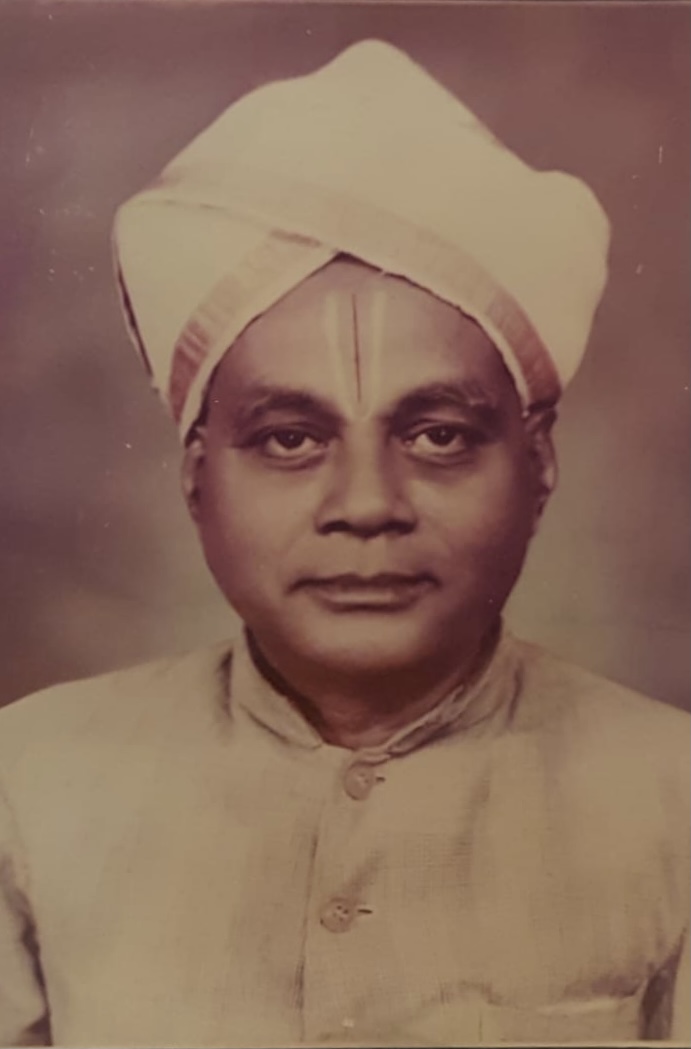
Sri C. D. Gopala Iyengar
Sri Gopala Iyengar was supported by others like Sri G. Narasimhamurthy (of Kalyan Cafe), Sri Narasinga Rao Mane (a businessman), Sri Sripadachar (a teacher in Arya Vaidya Shala) and Sri V. Krishnamurthi (a leading lawyer living just across the railway line). Justice E. S. Venkataramaiah, Chief Justice of India was also associated with the Samithi.
The music concerts held in the evening were perhaps not many in number those days, but the Samithi always provided quality fare.
The one striking feature of this Samithi which is sustained for sixty years is that no charge is levied for attending the concerts. It is absolutely true.
In the course of years, the music festival picked up and became popular with growing demand through voluntary support of the music-loving public. That is so even today. And it is said that the Seshadripuram audience who gather in the open-air auditorium of Seshadripuram Main College is one of the most cultured, appreciative and yet believing in quiet enjoyment. They are a discerning lot who have greatly ensured a smooth programme year after year.
In the beginning the concerts used to be held in the small precincts of Sri Rama Devasthana at Seshadripuram Circle, popularly known as ‘Swastik Circle’. The Swastik Talkies has given way to a modern commercial complex styled as Swastik Manandi Arcade.
By the late fifties with increasing response, there was a need to find more space. The answer came in the form of Seshadripuram High School premises then (which had shifted itself to the present College complex). There was a plus point in that Sri Gopala Iyengar was both the President of the Educational Association and the principal moving spirit of the music festival. So a bond has come to be established between the two - Seshadripuram Ramaseva Samithi (then known as Seshadripuram Ramothsava Samithi) and the Seshadripuram Educational Association, now the Seshadripuram Educational Trust.
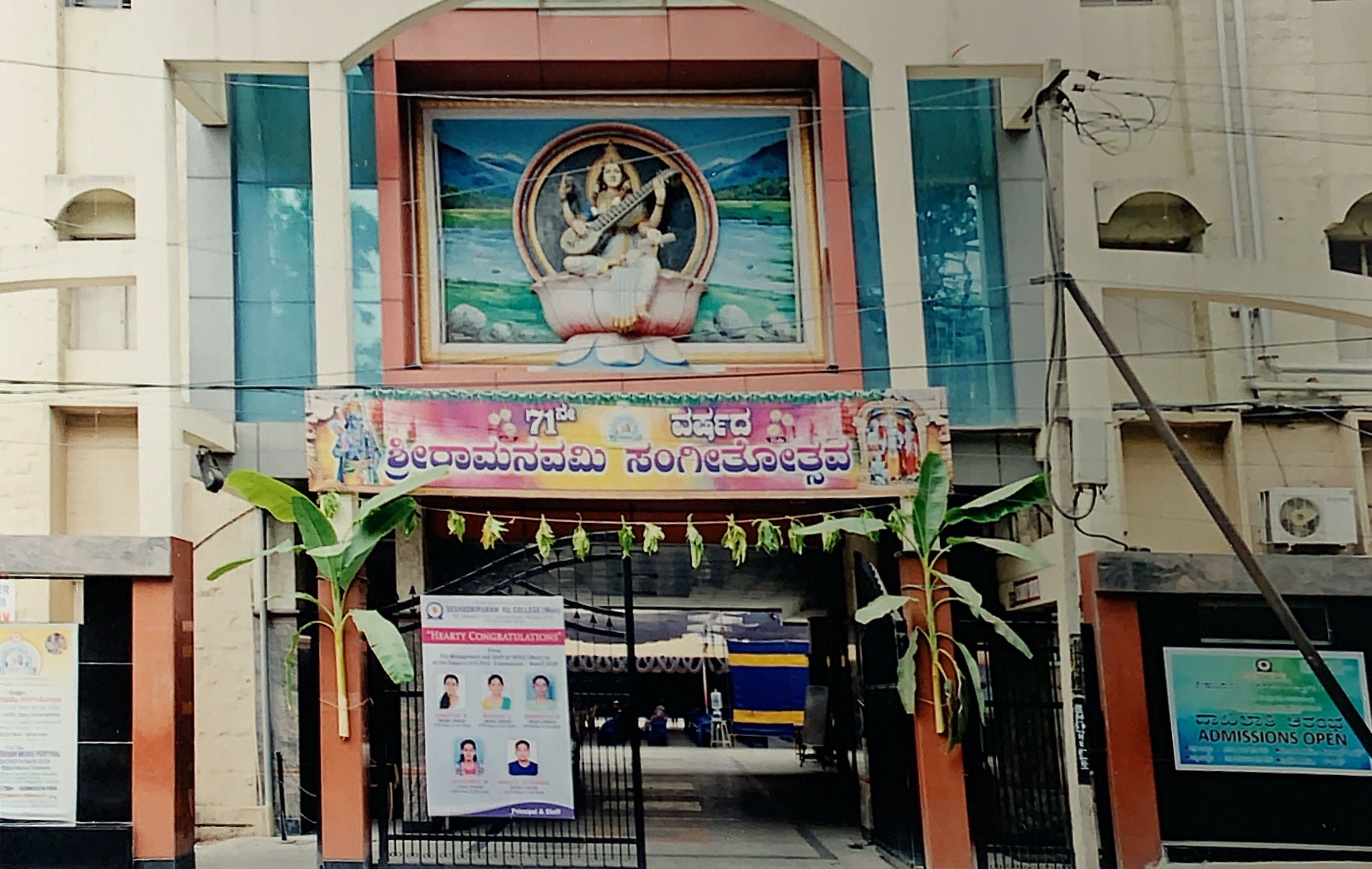
Seshadripuram Main College - the venue of the Seshadripuram Ramanavami Concerts
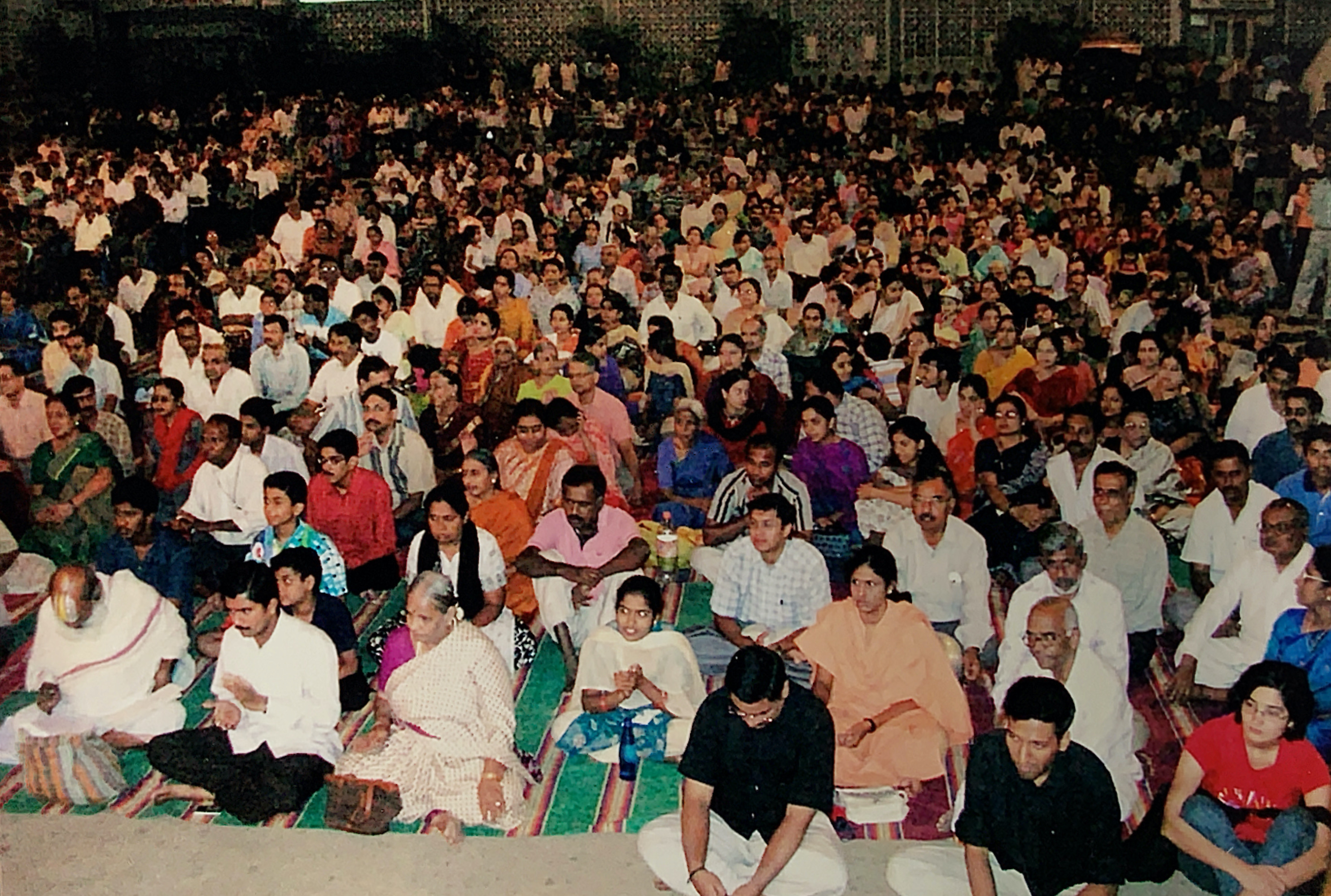
The open-air auditorium on a summer evening
The Trust makes available the open-air auditorium with the ‘Kuvempu Ranga Mandira’ stage and also provides other support. An everlasting bond has come into being between the two, with the result that the music programmes now are like annual music festivals for a longer duration and looked forward to by the music-loving public who come from this part of the city. Several persons come even from other parts of the city as well.
Those were the days when Sri Gopala Iyengar is believed to have gone from house to house to collect the money to run the show however small the contribution. Although that system has changed with the demands of time, the policy of providing free music continues to this day.
Many recall the olden times when music concerts would go on late into the evening/ night, particularly if some well-known artistes would continue to play or sing for hours. Also, that in those days there used to be a pandal but quite a large number used to sit in the playground just across the road (Nagappa Street) then known as Ghaffar Khan maidana (after Khan Abdul Ghaffar Khan, the Frontier Gandhi), now a recently-renovated and fully-laid-out park. But now the speakers are only within the open-air auditorium which fills up especially when some stalwarts perform.
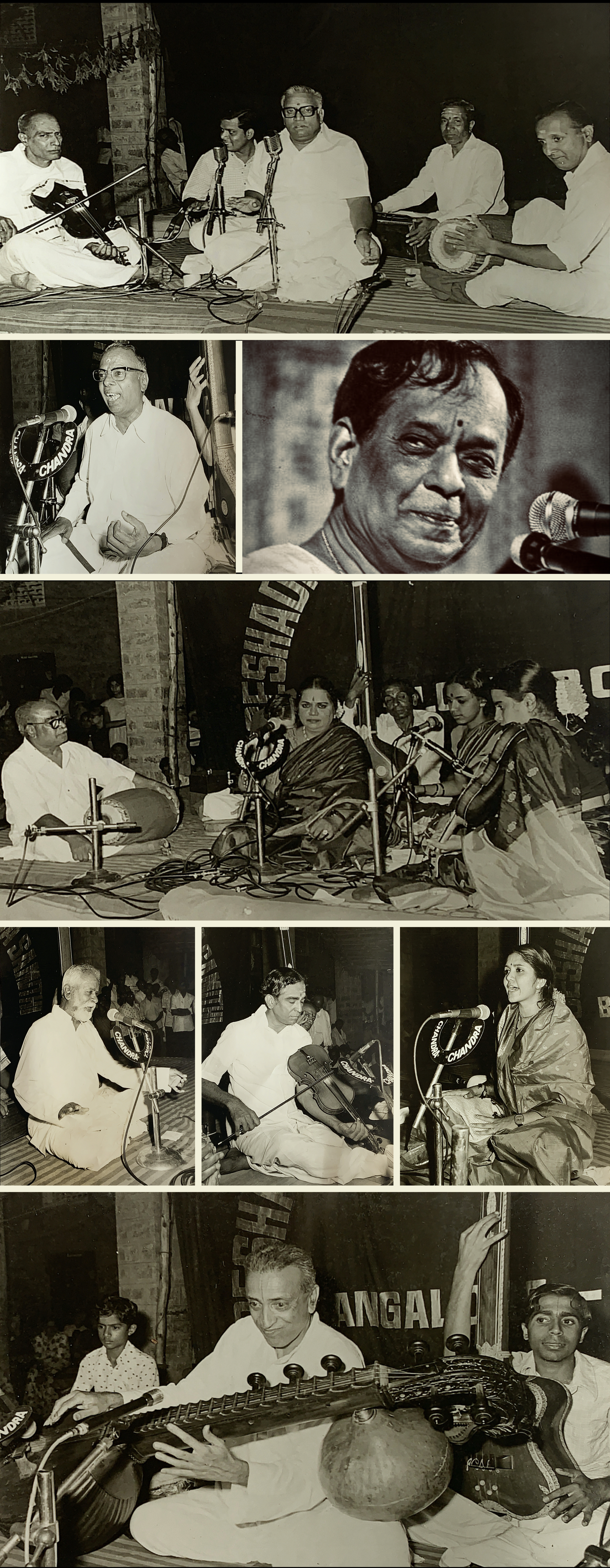
Stalwarts on the Samithi stage
(From top row to bottom and left to right)
Vid. Sri Maharajapuram Santhanam, Vid. Sri R. K. Srikantan, Vid. Dr. M. Balamuralikrishna, Vid. Dr. M. L. Vasanthakumari, Vid. Dr. S. Ramanathan, Vid. Sri Lalgudi G. Jayaraman, Vid. Smt. M. S. Sheela and Vid. Sri V. Doreswamy Iyengar.
Now the collections which are voluntary are made at the auditorium though it is believed that the Committee approaches some persons personally to obtain sizeable contributions, one has to remember that these are the days of increasing expenses all round and both the need and the demands of the artistes are also genuine. But with all this the tradition of free music continues.
In the olden days, even as late as some fifteen to twenty years back, the Samithi used to have a procession in the evening on the concluding day of Sri Rama Pattabhisheka. But with the then Secretary Sri K. S. Ramdas, who was functioning under the guidance of Mr. Krishnamurthi, all that was changed. Mr. Krishnamurthi, who practically succeeded Sri Gopala Iyengar the leading founder, was well-versed in Carnatic music and had good contacts with the then leading artistes. Mr. Narasimhamurthy, a leading hotelier, also played a prominent role in the activities.
Mr. H. R. L. N. Jois used to take up a large volume of work in organising the concerts for quite a few years. When Mr. K. S. Ramdas succeeded as the Secretary (with Mr. Jois continuing as Organising Secretary) matters became more streamlined in several aspects.
Mr. Krishnamurthi was succeeded as President by Mr. Bheemappa Chetty an art-loving personality who was associated with the famed Bellary Raghava. But unfortunately he did not last long since he passed away in an untimely death. His family trust, ‘Bheemappa Chetty Rangamma Lalithakala Trust’ contributes in several ways to support the music festival. He was succeeded for a brief while by Mr. Narasimhamurthy, one of the founders.
Thereafter Mr. C. Srinivasa Iyengar became the President for quite a few years while Mr. Ramdas continued as Secretary and Sri H. N. Narayan as Treasurer, until Mr. Ramdas himself passed away when he was on a visit to his daughter in the United States of America. That was rather a cruel blow to the Samithi. However, the Samithi has managed to keep up its tradition of service to the public under the guidance of Justice S. Venkataraman, a former judge of the High Court of Karnataka as the President and Mr. G. K. Srinivas, who was associated with the Samithi for many years, as the Vice President.
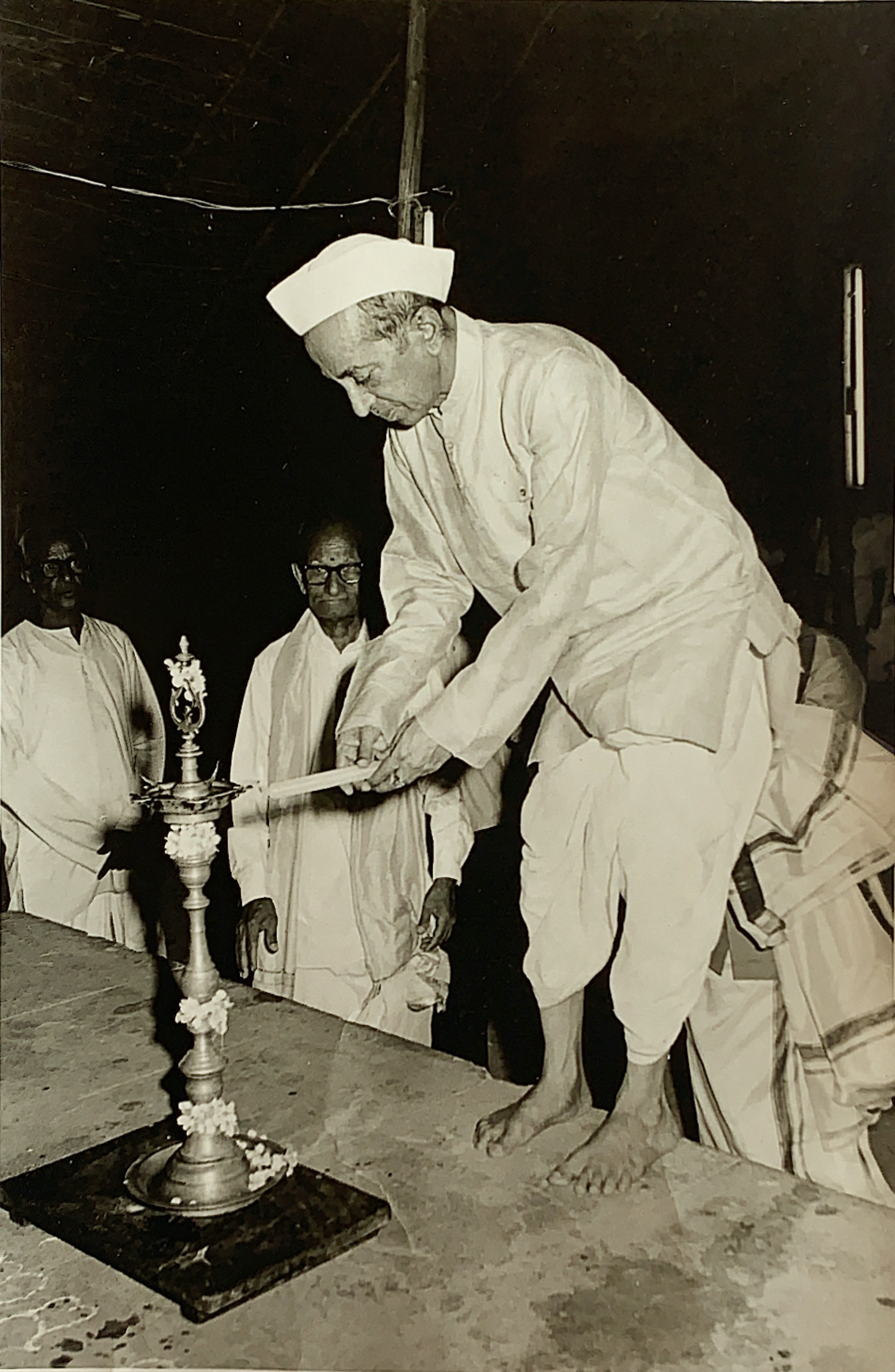
Sri B. D. Jatti inaugurating the music festival. Sri Jois and Sri Sripadachar in the background.
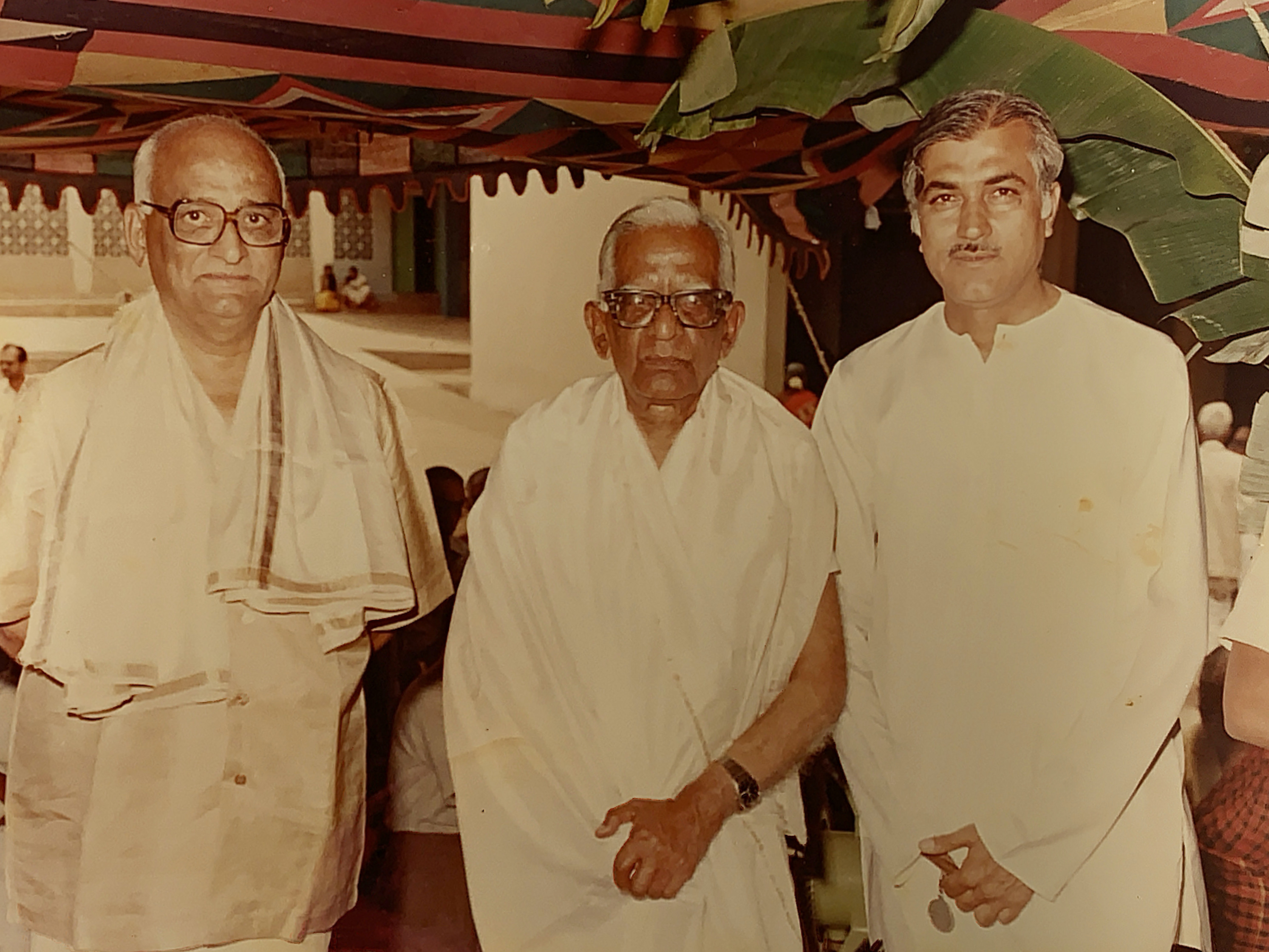
Sri V. Krishnamurthi, the then President, flanked by Sri K. S. Ramdas, Secretary and Sri H. N. Narayan, Treasurer.
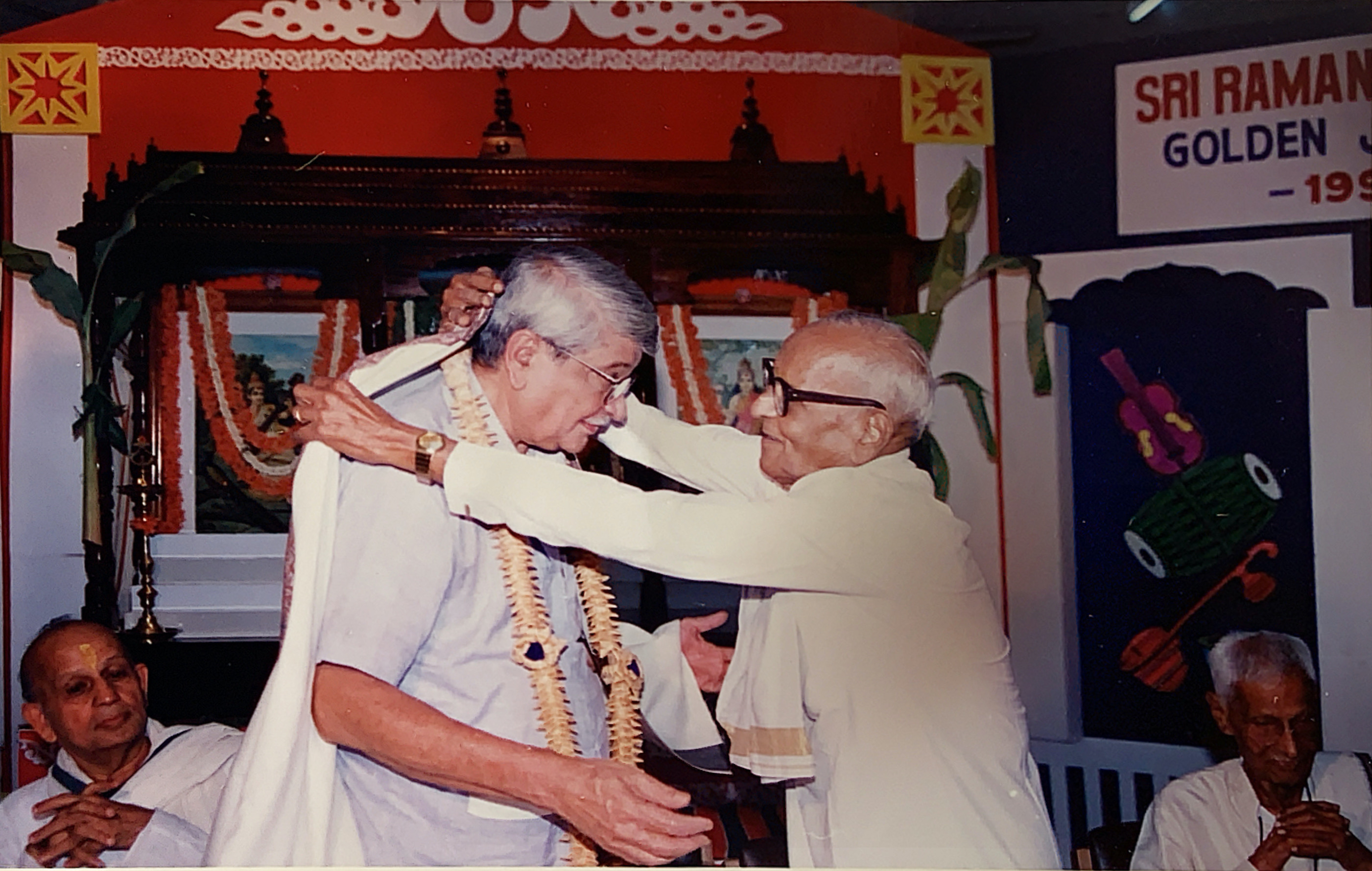
Sri G. Narasimhamurthy garlanding the chief guest.
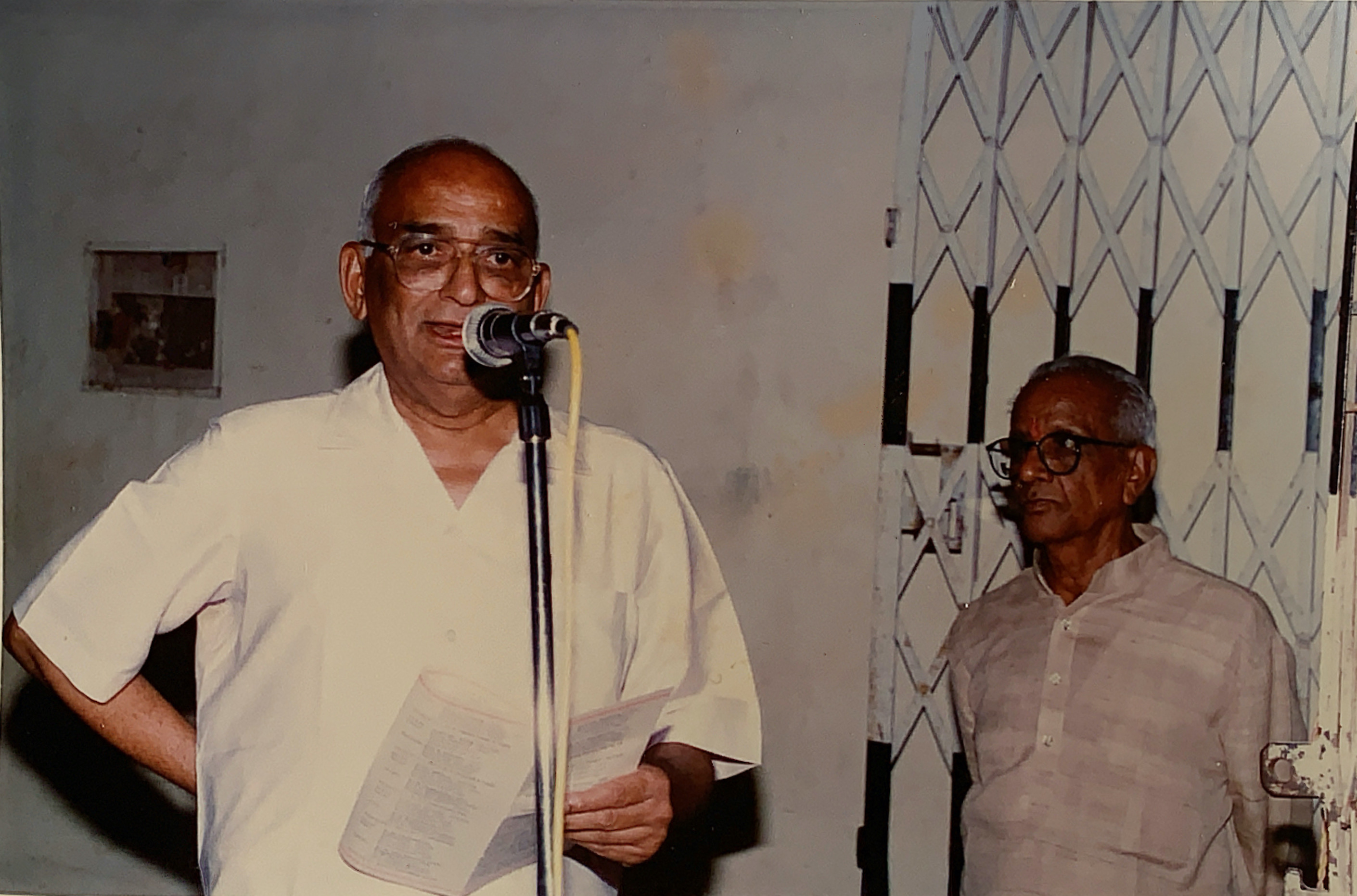
Sri K. S. Ramdas and Sri H. R. L. N. Jois.
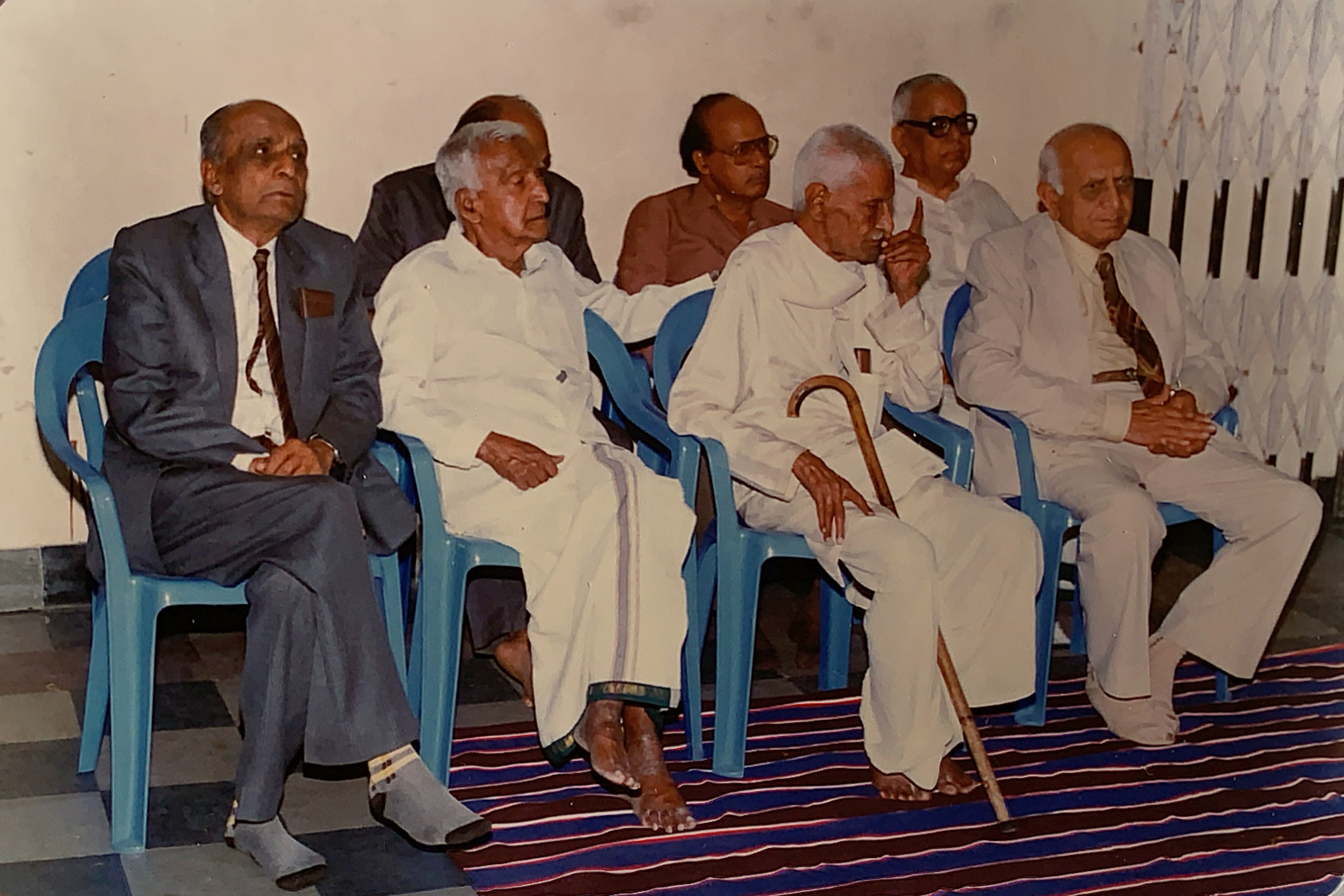
Sri C. Srinivas Iyengar, the then President of the Samithi, sitting second from left.
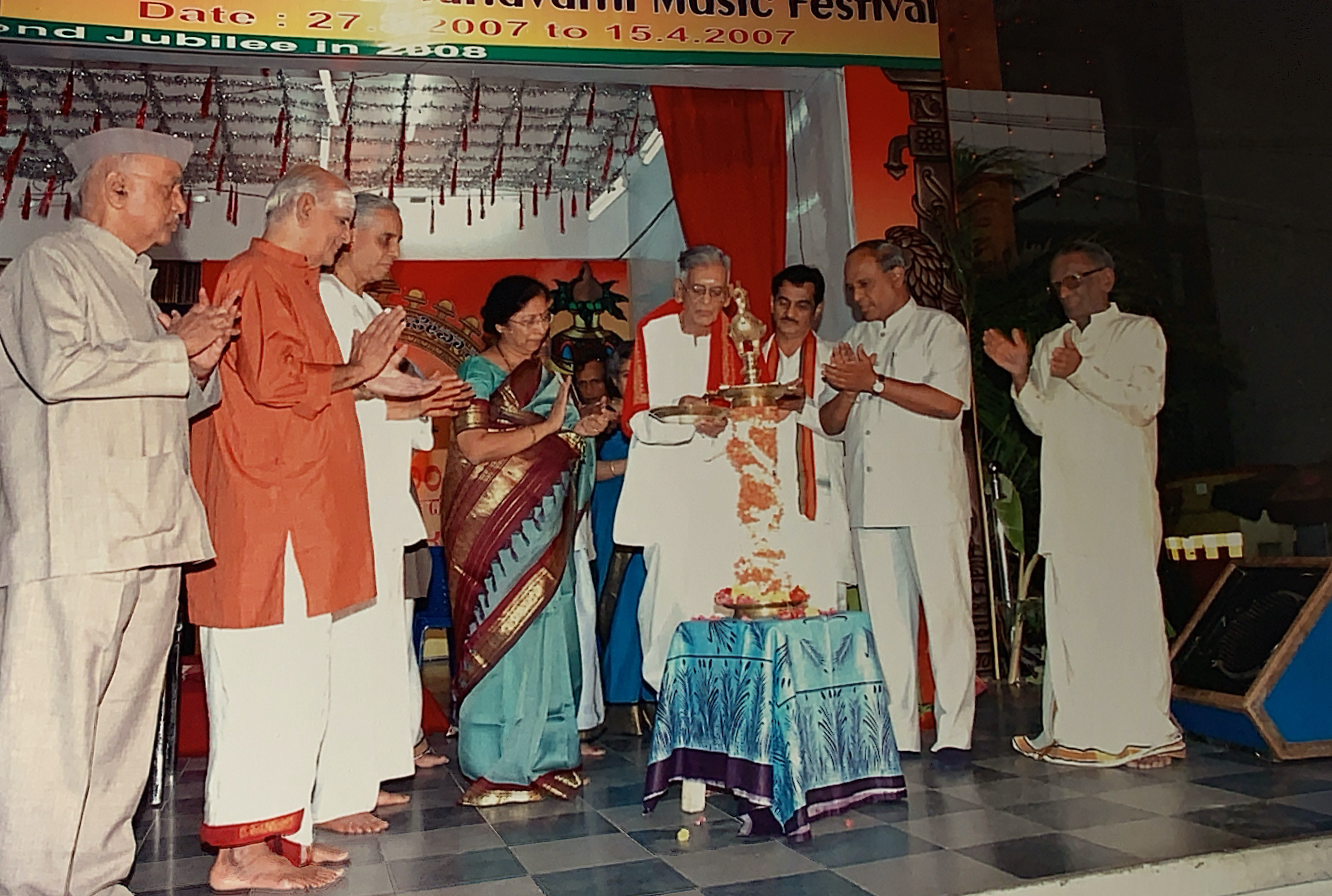
The inaugural ceremony of the Sri Ramanavami music festival with Sri G. K. Srinivas, Vice President, standing at the extreme left, and other office bearers of the Samithi.
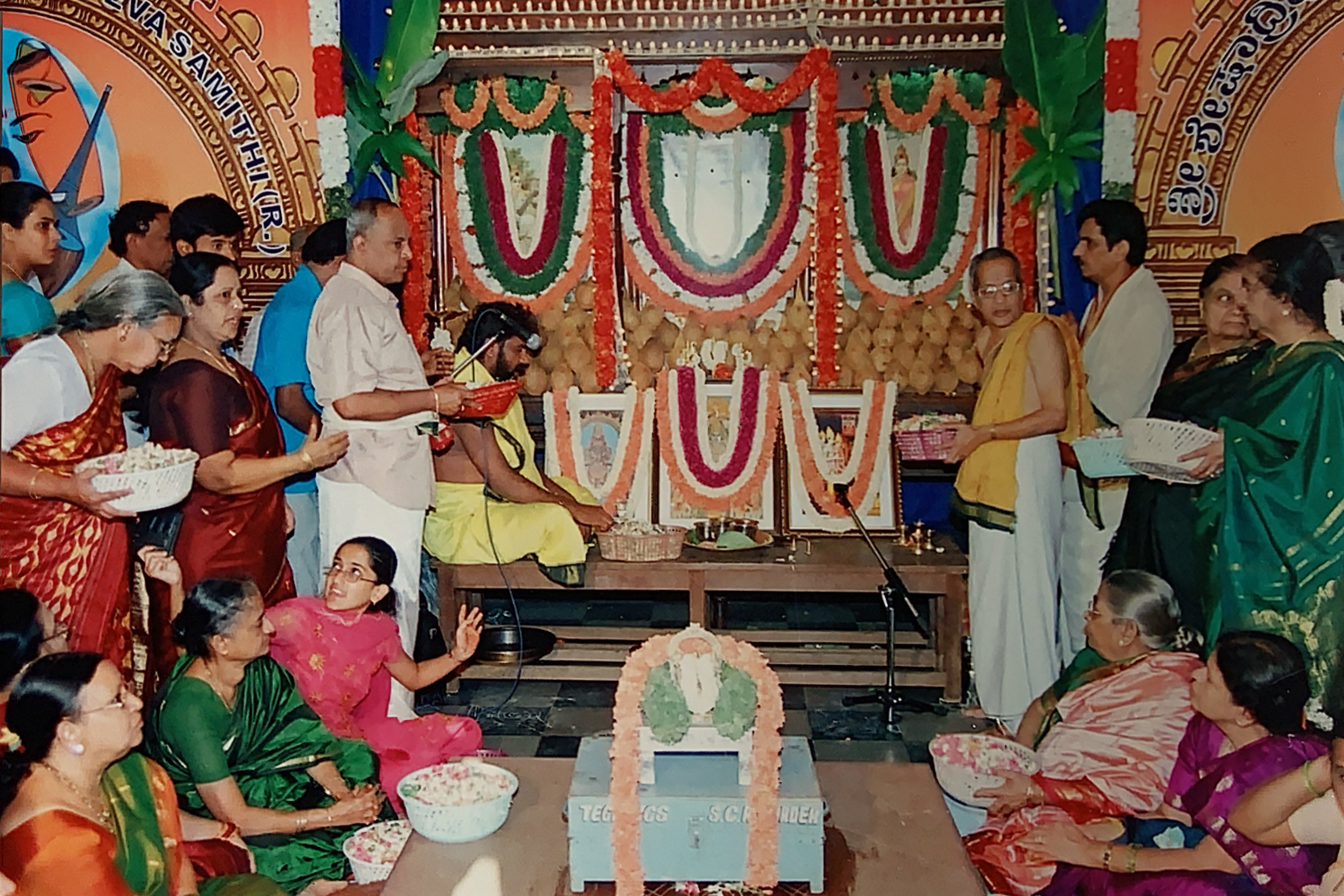
Laksharchana on the Pattabhishekam day.
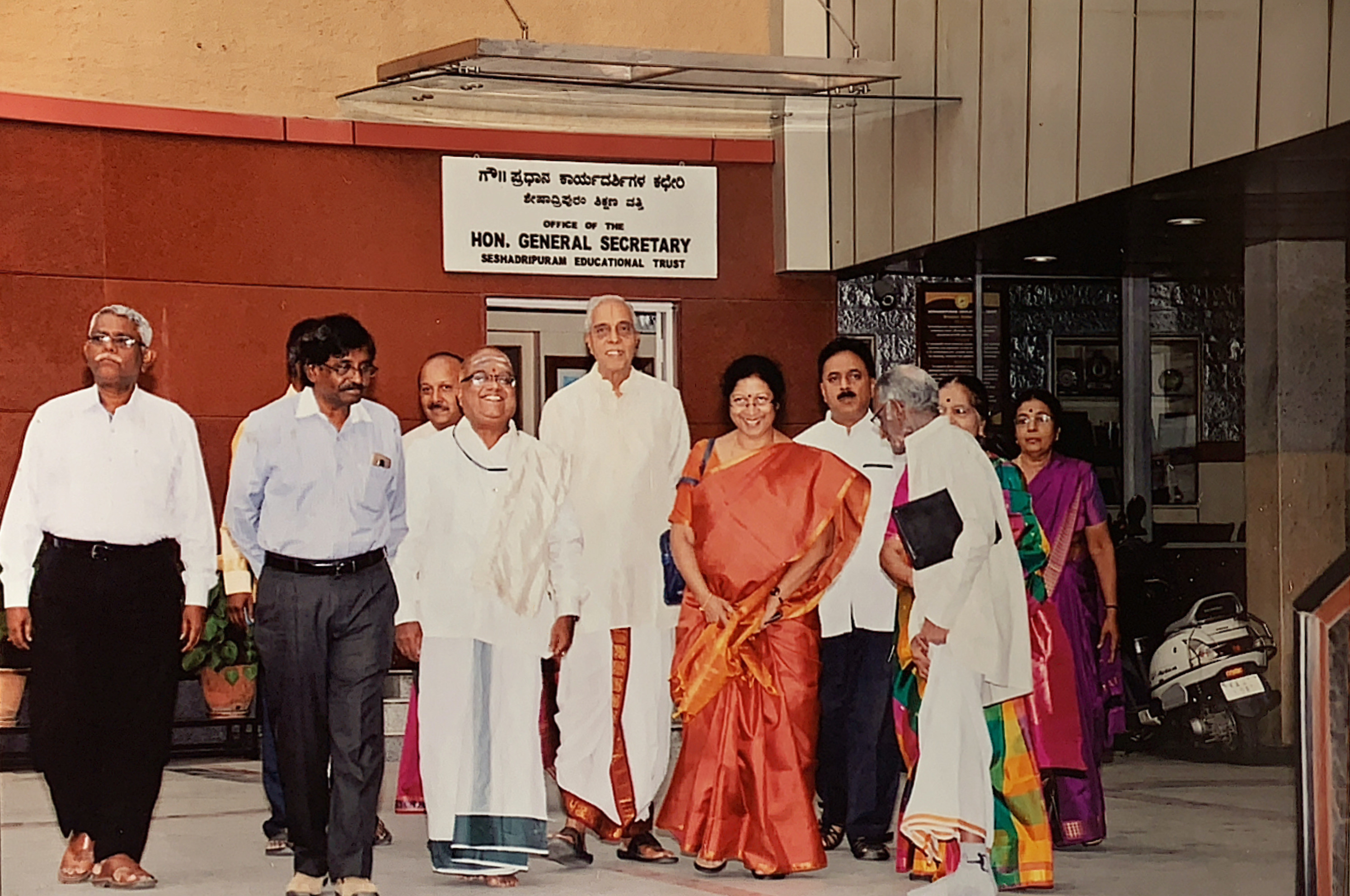
President Justice S. Venkataraman and Vice President, Sri Dr. Wooday P. Krishna flanked by the chief guests and other office bearers and committee members of the Samithi.
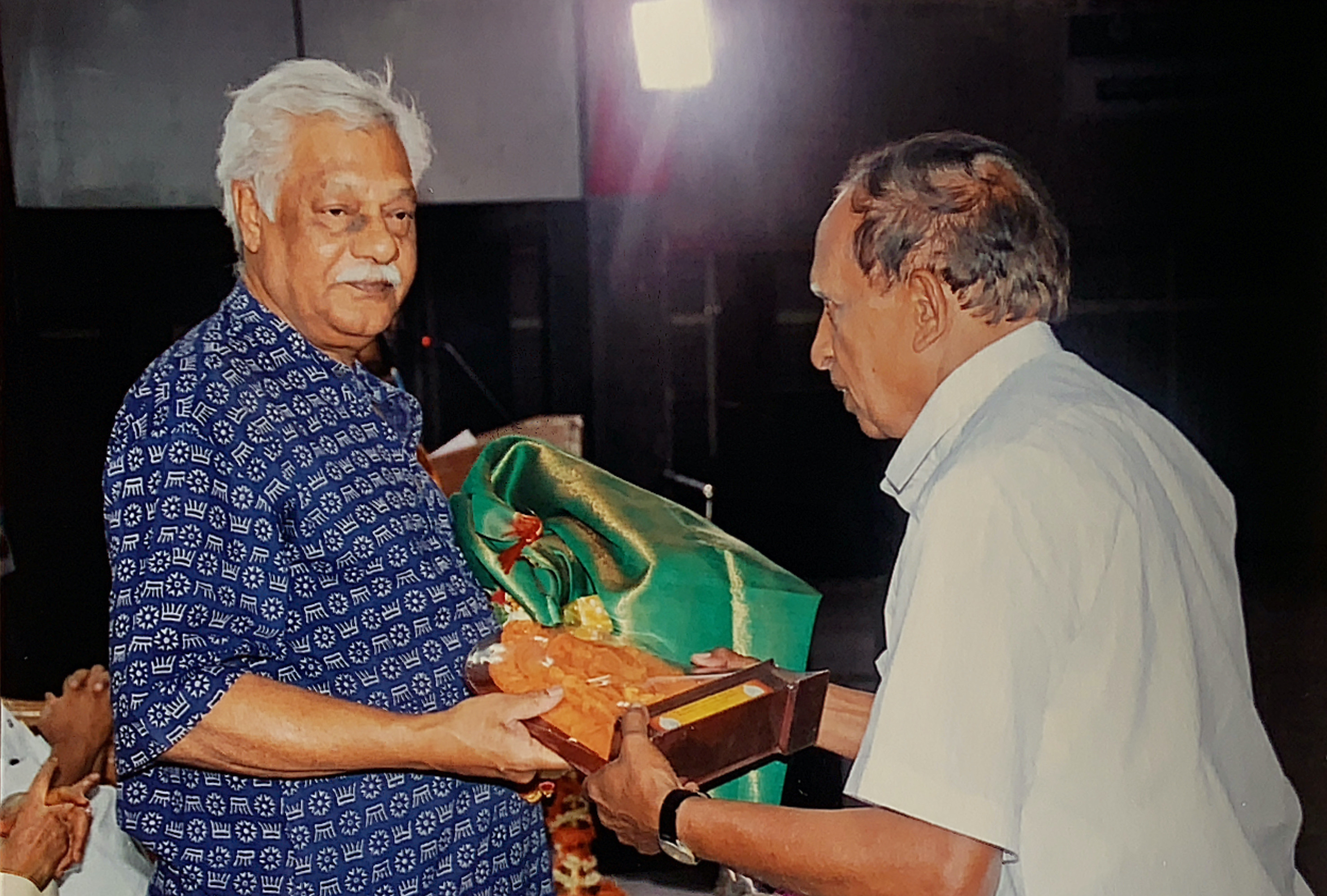
Sri H. N. Suresh, chief guest, being honoured by the Secretary, Sri Ramakrishnan.
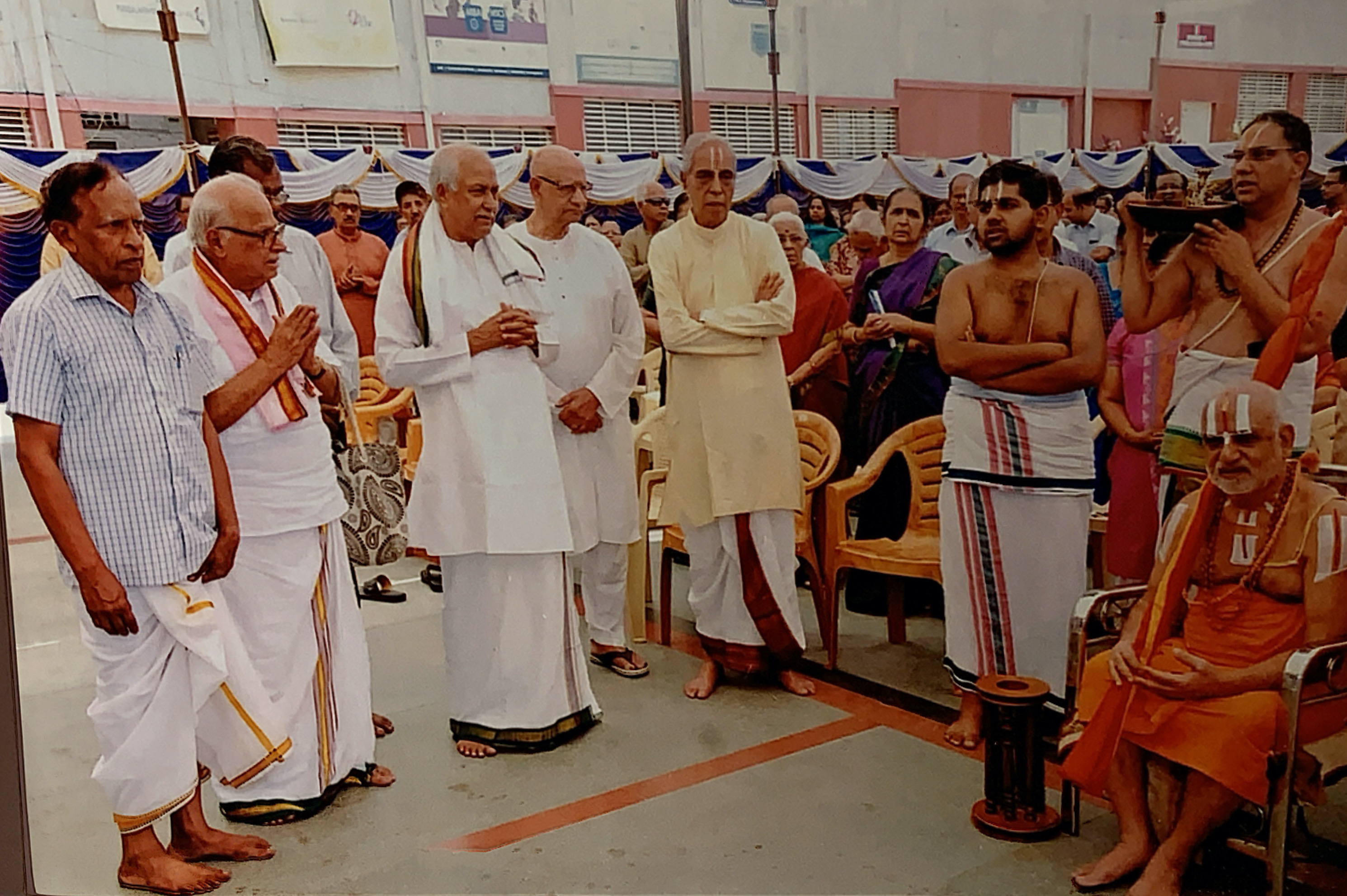
The President and Secretary with H H Sri Yadugiri Yatiraja Narayana Ramanuja Jeeyar Swamy.
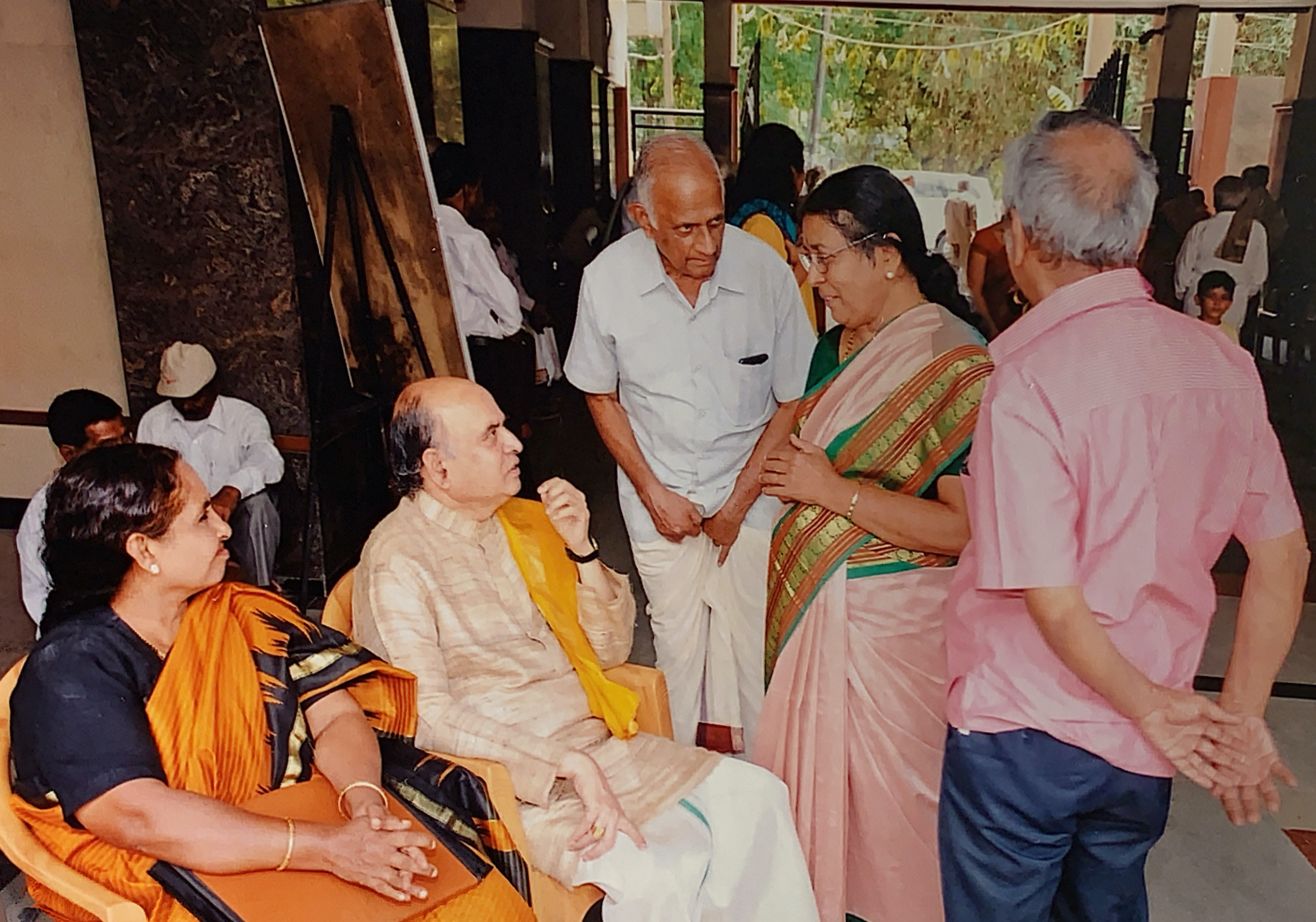
Smt. and Sri Mysore V. Subramanya with the committee members.
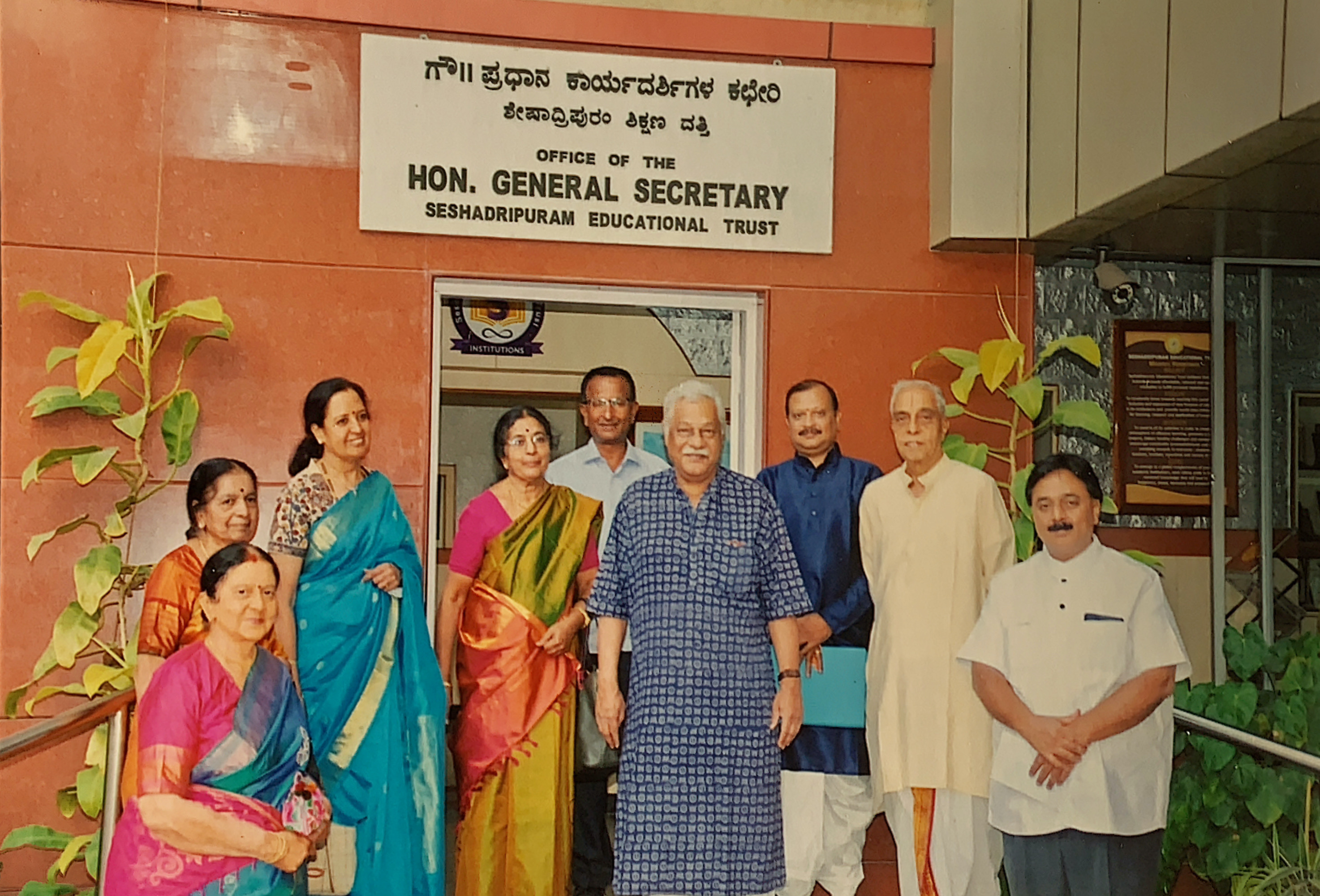
President, Vice President and committee members with the chief guests on the inaugural day of the festival.
There is a band of members of the Committee who provide voluntary service and look after various aspects so that there is an assured and smooth running of the Samithi, which is also striving to improve on various aspects.
The platform is popular both with seasoned campaigners who have appreciated the audience and the discerning music-loving public, as well as with the younger artistes who look for a launching pad.
However, the utmost credit must go to the music-loving public who are highly orderly with self-imposed discipline and the SET who generously give the use of the open-air auditorium, a timely thing during the summer months.
Yet another feature is the uniformly courteous way of dealing with everyone. The Samithi coordinates well and there is no kind of discrimination of any kind. Nothing special for any one except that a few seats are kept in reserve for donors. Otherwise no reservation of seats.
It may be appropriate to mention that, what the Constitution preaches is put into practice - secularism. Everyone is welcome irrespective of one’s caste, creed, religious faith or personal preferences. After all music and meditation are themselves a unique way of life - the Sangeeta Dhyana Marga.
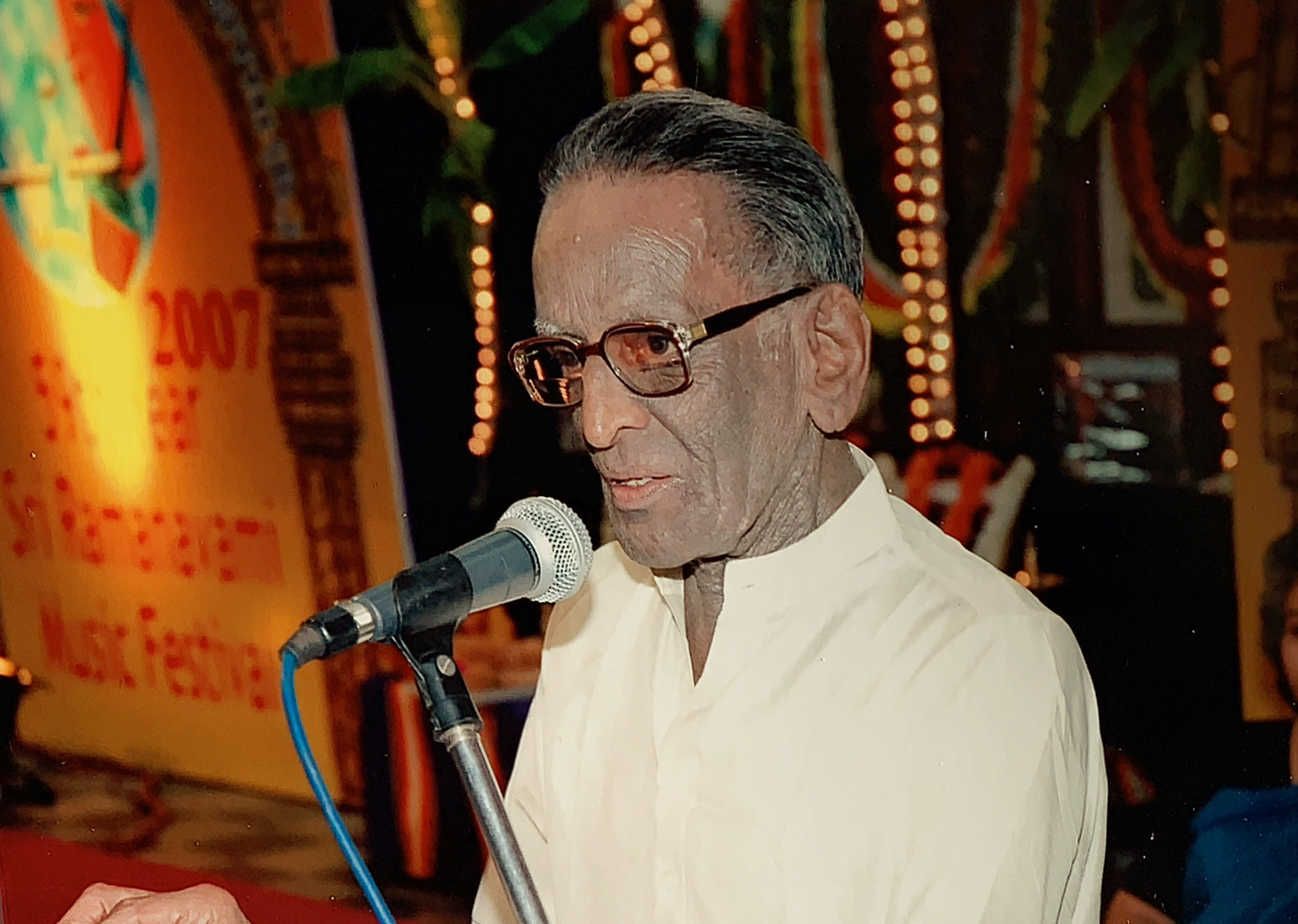
Footnote (March 2021)
Smt. Revathi Tarakaram, who was also a committee member, took over as the Treasurer of the Samithi from Sri H. N. Narayan, Senior Advocate. Sri V. Tarakaram and Prof. H. B. P. Venkatesh served as the Organising Secretaries. Sri Tarakaram completed a tenure of fifteen years as the Secretary of the Samithi until his sudden demise in 2018. He is succeeded by Sri Ramakrishnan who is the present Secretary of the Samithi.